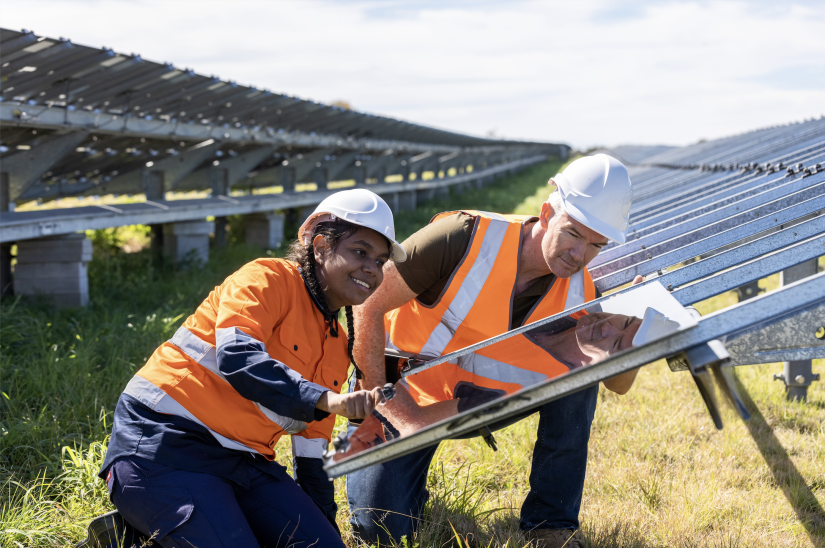A new report aims to enable careers, not just jobs, for First Nations Australians.

The gap in employment rates for First Nations Australians has not narrowed for three decades.
The majority of jobs offered to and taken up by First Nations people in regional and remote areas have something in common – they are of a casual nature, are low-paid and are not a career choice.
How can we bridge this gap, and build careers that benefit First Nations people?
First Nations communities often live in areas rich in renewable energy resources. By harnessing these resources, we can empower First Nations employment.
12 actions to power First Nations jobs in clean energy
The Institute for Sustainable Futures leads a consortium for the First Nations Clean Energy Network that has produced ‘Powering First Nations Jobs in Clean Energy”.
The report was officially launched at Parliament House by Federal Minister for Climate Change and Energy Chris Bowen.
It offers 12 key recommendations across energy, climate and industry policy.
Six of the 12 recommendations are actionable now, including:
- Mandating minimum Indigenous Procurement Policy and Australian Skills Guarantee compliance in Capacity Investment Scheme merit criteria
- Negotiating minimum First Nations employment targets in Renewable Energy Transformation Agreements for solar farms in renewable energy zones supported by pre-employment programs to provide job candidates
- Reviewing ARENA's and the Clean Energy Finance Corporation's procurement guidelines to incorporate employment and training targets for First Nations
- Setting up a coordinated scheme for wind farm apprenticeships
- Mandating employment and training targets in the delivery of First Nations housing retrofit programs supported by training and pre-apprenticeship programs
- Setting up a First Nations Clean Energy Cadetship Program for First Nations school students in the clean energy sector
Creating an inclusive energy transition
The aim is to build careers, not just jobs. To see intergenerational change taking place, First Nations people – young and old – need to be encouraged to trust their own abilities and aim high when it comes to shaping their employment pathways.
Co-author Dr Sarah Niklas says, “We found complementary programs, such as pre-apprenticeships programs led by industry, are essential. They bridge the crucial period between leaving school and starting vocational training and provide First Nations youth with numerical and literacy skills. More importantly, the programs provide the space to develop support networks and build the confidence and social ties to create belonging in the workforce.”
The clean energy transition presents a major opportunity to design a more inclusive economic system that recognises First Nations communities' vital contribution and potential.
Co-author Rusty Langdon says, “Partnering with First Nations people is an essential component of the energy transition that will benefit the whole community. Our research, in partnership with the First Nations Clean Energy Network, is another chapter in an ongoing conversation with First Nations people on the clean energy transition and I look forward to learning more as we continue this shared journey.”
If done well, the renewable energy transition should improve the lives of First Nations Australians and help bridge the employment gap for good.
more information

